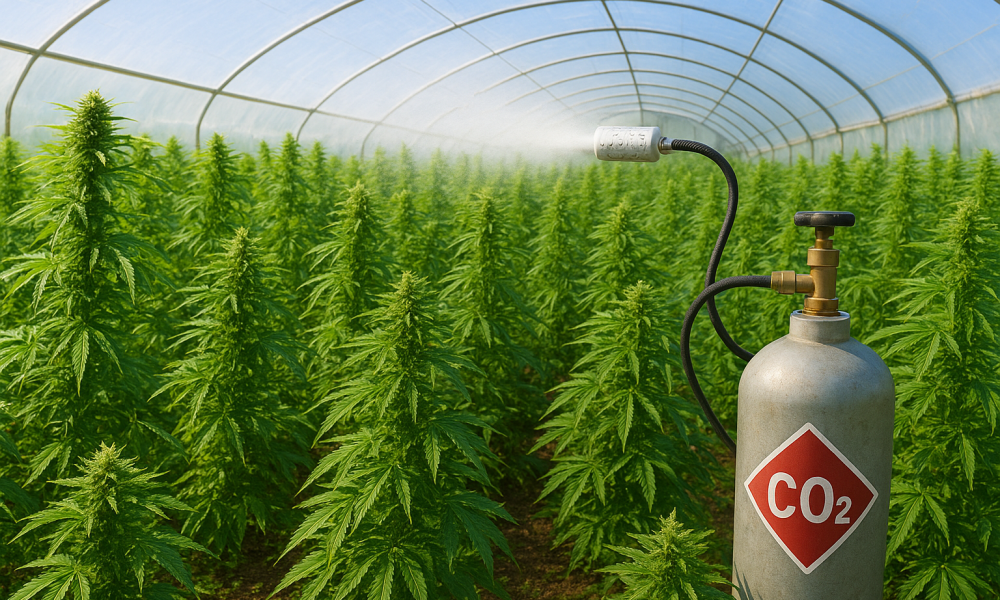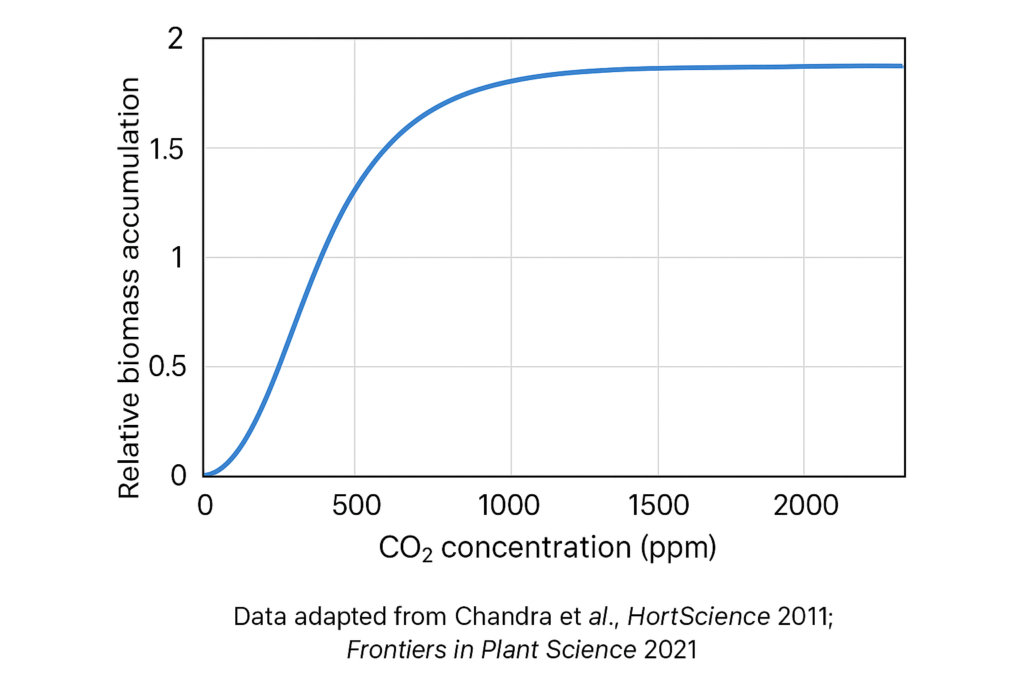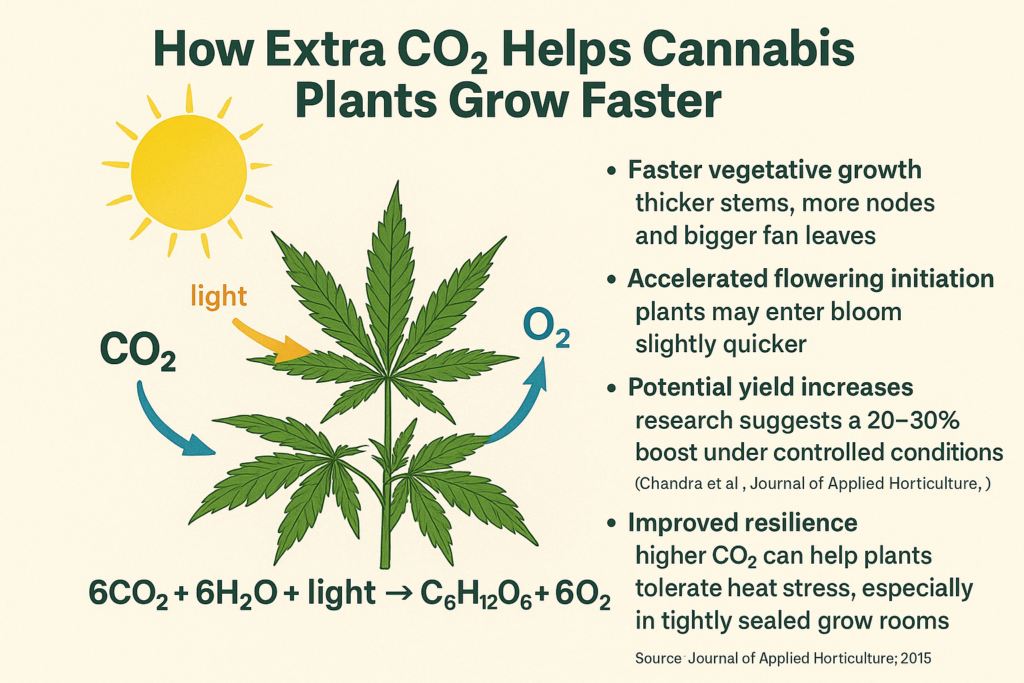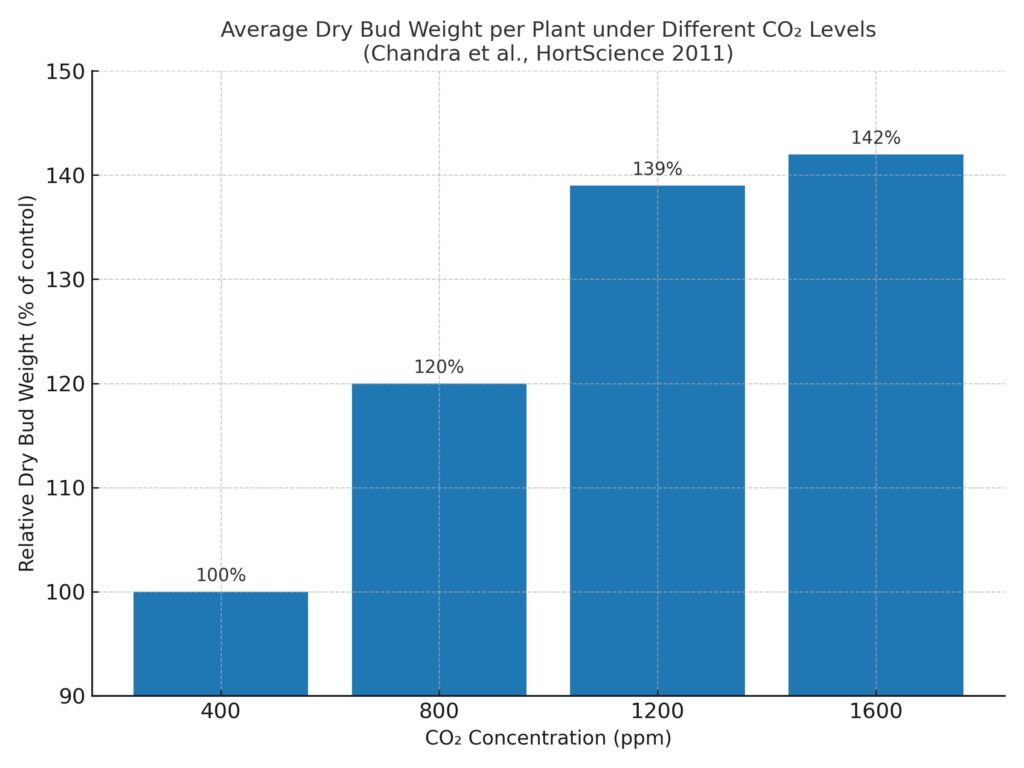Is CO₂ Injection Worth It? Pros and Cons for Cannabis Grow Rooms

Why Cannabis Growers Are Talking About CO₂ Injection
Over the past decade, one of the hottest debates among cannabis cultivators has been whether CO₂ injection is truly worth the investment. From professional grow rooms in Colorado and California to basement setups in Spain and Canada, cultivators are experimenting with carbon dioxide supplementation as a way to push cannabis yields beyond natural limits.
Why all the buzz? It comes down to photosynthesis. Cannabis plants, like all green plants, take in CO₂ and light to produce sugars that fuel growth. The more CO₂ available—up to a certain threshold—the faster this process can happen, resulting in more biomass, potentially denser buds, and faster flowering cycles.
But there’s another side of the story. CO₂ systems require money, planning, safety measures, and careful balancing. When poorly implemented, they can waste resources, harm workers, and even stress plants instead of helping them. Some growers swear by CO₂, others call it an expensive gimmick.
Recent cannabis cultivation studies, such as those reviewed in Frontiers in Plant Science (2021), show measurable gains in photosynthetic activity when plants are exposed to elevated CO₂ levels (around 1,200–1,500 ppm compared to the natural 400 ppm in the atmosphere). Yet the magnitude of yield increases depends heavily on genetics, grow environment, and whether other factors (light, nutrients, temperature) are optimized.
So—should you invest in CO₂ injection? Let’s break it down.

This line graph shows cannabis growth rate (biomass accumulation) vs. CO₂ concentration (ppm), with optimal growth plateauing around 1,200–1,500 ppm.
How Extra CO₂ Helps Cannabis Plants Grow Faster
Imagine you’re at a buffet. If there’s unlimited food but only a few plates, you’ll never eat as much as you could. For cannabis plants, CO₂ is the plate—a limiting factor in photosynthesis. When you give them more plates, they can eat more light and grow more efficiently.
Photosynthesis, in scientific terms, follows this equation:
6CO₂ + 6H₂O + light → C₆H₁₂O₆ + 6O₂
This simple formula explains why CO₂ is critical. When levels rise, cannabis plants can convert more light into sugars, which translates into:
- Faster vegetative growth – thicker stems, more nodes, and bigger fan leaves.
- Accelerated flowering initiation – plants may enter bloom slightly quicker.
- Potential yield increases – research suggests a 20–30% boost under controlled conditions (Chandra et al., Journal of Applied Horticulture, 2015).
- Improved resilience – higher CO₂ can help plants tolerate heat stress, especially in tightly sealed grow rooms with intense lighting.
But here’s the catch: CO₂ only works if light intensity, nutrients, and temperature are already dialed in. A plant under weak LEDs or suffering from nutrient lockout won’t magically thrive with added CO₂. Many growers compare it to “pressing the turbo button on an empty gas tank.”
Practical growers often use sealed environments (known as closed-loop grow rooms) to control every factor. In such setups, adding CO₂ can shave off days in veg and produce fuller canopies. For outdoor or greenhouse cultivation, enrichment is trickier but still possible with CO₂ generators, though environmental regulations may apply.

The Cost and Risks of CO₂ in a Cannabis Grow Room
Here’s where the debate heats up. While CO₂ injection sounds magical on paper, it isn’t free—or risk-free.
Costs to Consider:
- Equipment: CO₂ tanks, regulators, sensors, and controllers can cost anywhere from $500 to $3,000+ depending on setup size.
- Ongoing supply: Compressed CO₂ tanks or propane/natural gas burners need constant refills, costing $30–$60 per tank or fuel equivalent.
- Electricity: Since CO₂ is most effective in sealed grow rooms, cultivators often run more HVAC, dehumidifiers, and high-intensity lights—driving up power bills.
- Labor: Monitoring ppm levels is not optional. Too low and you’re wasting money; too high and you risk health hazards.
Risks to Plants and People:
- Plant stress: Above ~1,800 ppm, cannabis may experience diminishing returns and potential metabolic imbalances.
- Human safety: CO₂ is odorless and can displace oxygen. Levels above 5,000 ppm are dangerous to workers. OSHA recommends keeping workplace exposure under 5,000 ppm over an 8-hour shift.
- Fire hazard: Some CO₂ generators burn propane or natural gas, creating additional risks.
- Waste: In poorly sealed environments, CO₂ escapes quickly, meaning you’re literally “venting money.”
Real-world grower experiences show that while CO₂ can indeed raise yields, the ROI (return on investment) depends on scale. A large commercial grower producing thousands of pounds per year may see significant profit boosts. A home grower with a 4×4 tent may end up spending more than they gain.
Bigger Cannabis Buds: Myth or Reality with CO₂?
One of the biggest selling points of CO₂ systems is the promise of fatter, denser buds. But is this always true?
According to multiple studies, including Chandra et al. (HortScience, 2011), elevated CO₂ can significantly increase flower dry weight. Plants under 1,200 ppm CO₂ produced up to 39% more biomass compared to control groups. Growers often report more compact, resinous buds under enriched conditions.
But here’s the nuance: bigger buds don’t always mean better quality. If CO₂ is combined with high-intensity lighting (like double-ended HPS or modern LEDs), the plant can indeed produce more cannabinoids and terpenes. However, if the rest of the environment isn’t balanced—especially nutrients and humidity—buds may get bigger but not necessarily more potent.
A 2020 study in Plant Physiology and Biochemistry highlighted that while THC and CBD levels were generally stable under CO₂ enrichment, terpene profiles could shift depending on stress factors. For flavor-conscious growers, this means dialing in environmental precision is crucial.
So yes—CO₂ can grow bigger buds, but think of it as amplifying what’s already there. It won’t magically turn a mid-tier strain into top-shelf fire.

Here’s the chart — based on Chandra et al. (HortScience, 2011) data, showing how average dry bud weight increases under different CO₂ levels.
CO₂ for Cannabis Grows: Smart Move or Waste of Time?
At this point, it’s clear that CO₂ is neither a miracle solution nor a pointless gimmick. The truth lies in context.
CO₂ Injection Makes Sense If:
- You run a sealed or semi-sealed indoor grow room.
- You already have strong lighting (minimum 600W+ HID or modern full-spectrum LED).
- You’ve optimized nutrients, irrigation, and climate control.
- You grow at a medium-to-large scale where ROI matters.
CO₂ Injection May Be a Waste If:
- You’re a small hobby grower with a few plants.
- Your grow tent isn’t sealed and leaks CO₂ quickly.
- You haven’t yet mastered basic plant care, lighting, and nutrient balance.
- You’re focused more on quality than quantity and don’t have infrastructure for precision control.
In the end, CO₂ is a scalability tool. It’s best suited for professional growers who treat cannabis cultivation like a business. For craft growers who value flavor complexity, terpene preservation, and artisanal practices, CO₂ may offer fewer benefits compared to investing in better soil, lighting, or genetics.
Professional Glossary (10 Key Terms)
- PPM (Parts Per Million) – Measurement unit for CO₂ concentration in the air.
- Closed-Loop Grow Room – A sealed cultivation space with controlled air, CO₂, humidity, and temperature.
- Canopy Density – The thickness and coverage of plant leaves under grow lights.
- Photosynthetic Rate – Speed at which plants convert light, CO₂, and water into sugars.
- VPD (Vapor Pressure Deficit) – A critical measurement for plant transpiration and humidity balance.
- Supplemental Lighting – High-powered lights used to drive photosynthesis when CO₂ levels are raised.
- Cannabinoid Profile – The chemical breakdown of cannabinoids like THC, CBD, and CBG in cannabis flowers.
- Fertigation – Combination of fertilization and irrigation for precise nutrient delivery.
- ROI (Return on Investment) – Financial gain or loss relative to money spent on CO₂ systems.
- Terpene Modulation – The effect of environmental factors on terpene production in cannabis.
Is CO₂ Really Worth It?
So, is CO₂ injection worth it for cannabis grow rooms? The answer depends on your scale, goals, and level of control. For commercial growers chasing higher yields and faster cycles, it’s a powerful tool—when paired with strong lighting and precise environmental management. For hobbyists or small-scale growers, it often makes more sense to perfect fundamentals before investing in CO₂.
At the end of the day, CO₂ is like a turbocharger for cannabis. But just like a turbo, it only works if the engine (your grow room) is already finely tuned.
👉 Are you ready to take your grow to the next level? Visit our [Shop Page] to explore top-quality equipment, seeds, and solutions from trusted companies in the cannabis industry. Don’t miss out on the tools professionals use to maximize yield and quality.
💬 What about you—have you tried CO₂ injection in your cannabis grow room? Did you notice bigger buds, faster growth, or no difference at all? Share your experience in the comments—we’d love to hear your story!
